Ortofon, which turns 100 next year, launched the original Windfeld cartridge nearly a decade ago. Named for cartridge designer Per Windfeld—who had just retired at age 75, after 30 years with the company—that top-of-the-line cartridge cost $3400 at the time of its introduction.

Between 1976 and 2006, Per Windfeld oversaw the development of cartridges from the top to the bottom of Ortofon’s extensive line, including the MC 20, MC Rohmann, and MC Jubilee, as well as Ortofon’s many series of models: MC Super, Kontrapunkt, MC Rondo, and the budget-priced OM and Concorde DJ series. In a recent interview, Windfeld said that he figures he’s developed at least 50 cartridge models. I’m glad he’s still going strong, and has lived to see the remarkable resurgence of vinyl.
The original Windfeld cartridge was the first developed by its namesake’s successor, Leif Johannsen, Ortofon’s manager of R&D. It retained many of the Per Windfeld innovations found in other Ortofons, including Wide Range Damping (WRD): two dampers of different viscosities clamping between them a small, heavy, metal disc. At the time, Ortofon claimed that the WRD assembly produces ideal motor damping throughout and beyond the audioband, to help produce a linear, unusually extended frequency response and outstanding tracking at a vertical tracking force (VTF) of 2.6gm.
The original Windfeld’s low-mass, high-rigidity generator had a boron cantilever and coils wound with Ortofon’s Aucurum wire—gold-plated, 99.9999%-oxygen-free monocrystalline copper—onto a precision armature. The claimed results are high channel separation, lower distortion, and better channel balance. A strong neodymium magnet system combined elements of Per Windfeld’s Kontrapunkt and MC Jubilee designs with a Field Stabilizing Element (FSE) inside the magnet system, to produce a linear magnetic field throughout the armature’s movement. The result, according to Ortofon, was a 4 ohm, 0.3mV-output system with lower levels of intermodulation and dynamic distortion.
This story is from the August 2017 edition of Stereophile.
Start your 7-day Magzter GOLD free trial to access thousands of curated premium stories, and 9,000+ magazines and newspapers.
Already a subscriber ? Sign In
This story is from the August 2017 edition of Stereophile.
Start your 7-day Magzter GOLD free trial to access thousands of curated premium stories, and 9,000+ magazines and newspapers.
Already a subscriber? Sign In
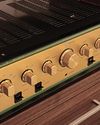
German kitchens, Japanese amps, and Afropop gems
BRILLIANT CORNERS - I have a day job at a museum. One of my favorite things about working there is taking the elevator from my office down to one of the floors open to the public; I walk into the galleries through a discreet panel in the wall. This makes me feel like I'm in one of those horror-movie manors with a tunnel concealed behind a bookshelf. Sometimes I startle people, which I kind of enjoy.

EDITOR'S PICK - RECORDING OF THE MONTH
The record business was awash in money and power. Vinyl LPs were still five bucks, and while the pressings could be suspect, the music-buying public still snapped them up en masse.
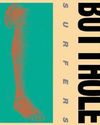
The Butthole Surfers wipe out
REVINYLIZATION - Music's lunatic fringe drifts further out every hour. As it should. In this century, with computers playing an ever-larger role, music continues to fragment and become infinitely more varied. This splintering is either the essence of what keeps it relevant as an art form or something profoundly disturbing, to be hated and feared.
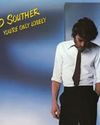
You're only lonely
AURAL ROBERT - The least surprising story in music today is the inevitable passing of irreplaceable talent. Tenor saxophonist Benny Golson died at age 95 the day I finished this salute to another fallen star, Southern California singer/songwriter John David \"JD\" Souther.

PS Audio Aspen FR5 - LOUDSPEAKER
I remember the first PS Audio product: a simple phono stage. It was so simple - a passive RIAA eq filter flanked by a pair of primitive op-amps - that when the schematic was made public, I built one myself; I was in the midst of my DIY years. I thought it was, to use a word from that time, nifty.
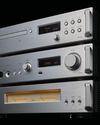
TEAC UD-701N - STREAMING PREAMP, D/A CONVERTER
In Gramophone Dreams #88, I described the sound of TEAC's VRDS-701T CD transport as \"dense and precise in a way I had never previously heard from digital.\" I went on to explain, \"by dense, I mean there was a tangible corporeality effected by seemingly infinite quantities of small, tightly packed molecules of musical information.\"
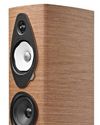
Sonus faber Sonetto V G2 - LOUDSPEAKER
Here's a hard truth: A written review of a full-sized speaker any speaker, really-is, at best, semi-useful. We all listen differently, we have different musical tastes, our system electronics are different, and our listening rooms vary a lot. You will gain a general picture of a speaker's capabilities and foibles from John Atkinson's measurements, and I can tell you how the speakers sound to me, in my room. But that's it. You need to hear them for yourself before making a buying decision. The best I can do is tell you how my music brain felt when the speakers were in my house and making music.
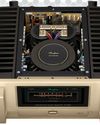
STEREOPHILE'S 33RD ANNUAL - PRODUCT OF THE YEAR AWARD 2024
When Stereophile's Product of the Year Awards were first published, in 1992, we decided that unlike some other publications and their awards schemes, we would keep the number of categories to a minimum. That way, we would avoid what the late Art Dudley once described as the \"every child in the class gets a prize\" syndrome.
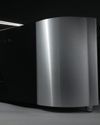
Moon 861 - POWER AMPLIFIER
It is unusual to begin a review with a detailed discussion of setup. But setup protocol for the Moon 861 power amplifier ($22,000 each), the top-level amplifier in the North Collection from Moon, which I reviewed bridged in mono, proved crucial to its sound.
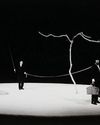
Mobile Fidelity, PrimaLuna, and First Watt redux
GRAMOPHONE DREAMS - It's important for readers to remember that I've spent my adult life as an artist and mechanic. Making things. Working as a tradesperson during the day then at an easel or workbench at night.